6. BioFabricating Materials¶
- Produce at least two grown and/or two crafted materials:
- Grown materials - Grow a material, experimenting with at least 2 different recipes and variations thereof. Document the process, ingredients, changes, describe and compare the materials
- Craft materials - Craft a material, experimenting with at least 2 different recipes and variations thereof. Document the process, ingredients, changes, describe and compare the materials
- Document your recipes, the ingredients and process and if there have been changes, document your unexpected discoveries
- Name your materials, classify them by typology and display them in a systematic order of samples.
- EXTRA POINT Submit some of your swatches to the analog material library of your lab. (20cm *20cm aprox)
Inspirations¶
This week include the very organic work of Marco Donnarumma - amygdala as well as the bio menstrual experimentation by Nadia Campo Woytuk & Marie Louise Juul Søndergaard
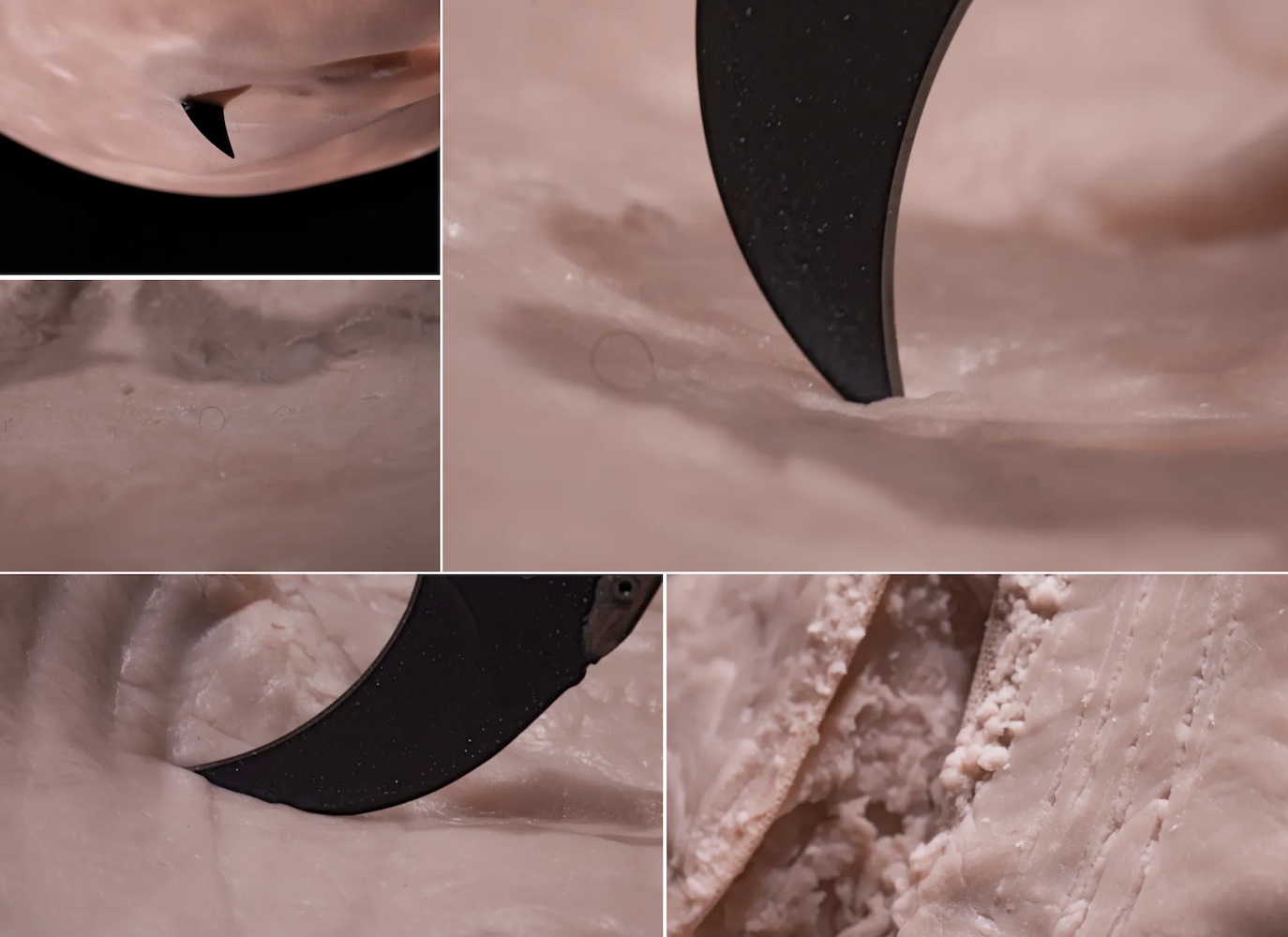
Cornstarch biomaterial¶
We followed the following recepi : Cornstarch biomaterial
Composition¶
- 10g Corn Starch
- 1 teaspoon vinegar
- 1 teaspoon Glycerin
- Water 85 ml
- Charron pigment
- tumeric pigment made in the class on Biochromes
Cooking with charron pigment¶
- We added the corn starch and cold water to a pot, and let the starch disperse in the water at room temperature.
- We add the glycerol and the vinegar and the pigment.
- We heated at very low temperature for about 5-10 minutes, with constant stirring , until a viscous consistency is achieved.
- We poured the mixture on a non-stick surface.
- Air dry the samples overnight. The result is a gluie material that is translucid
| Cornstarch | with charron pigment |
|---|---|
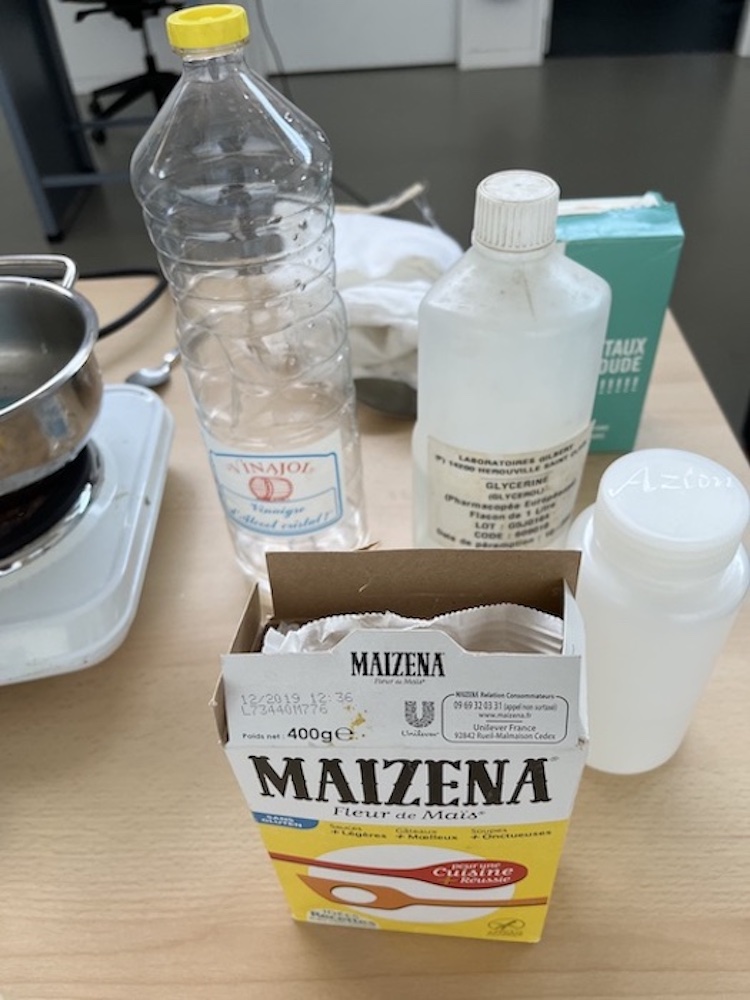 |
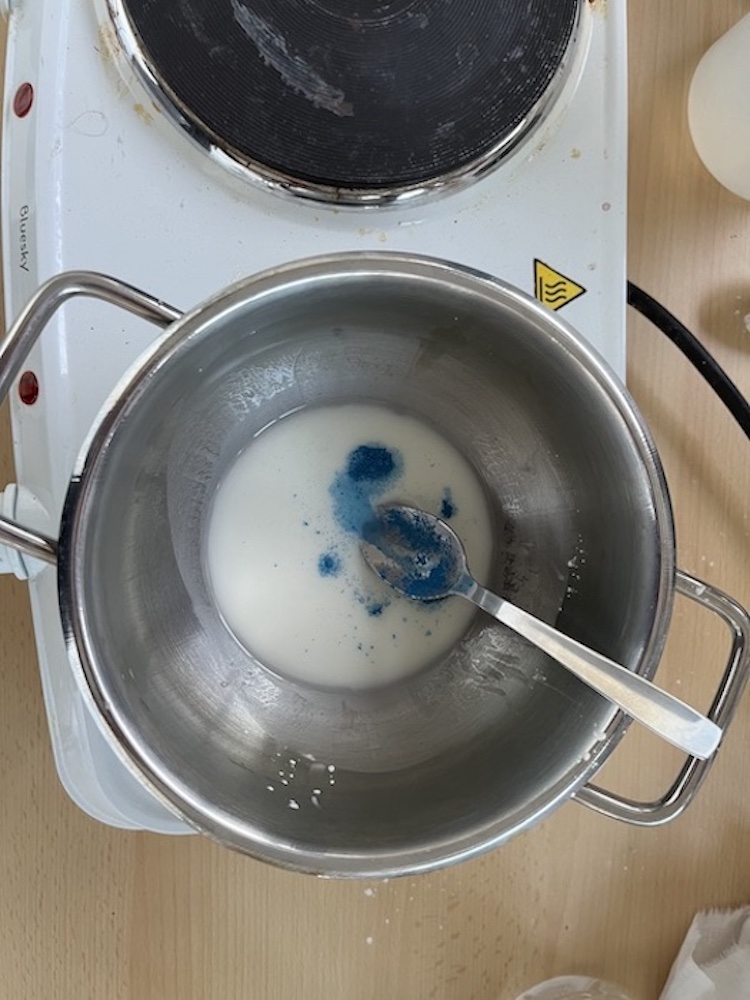 |
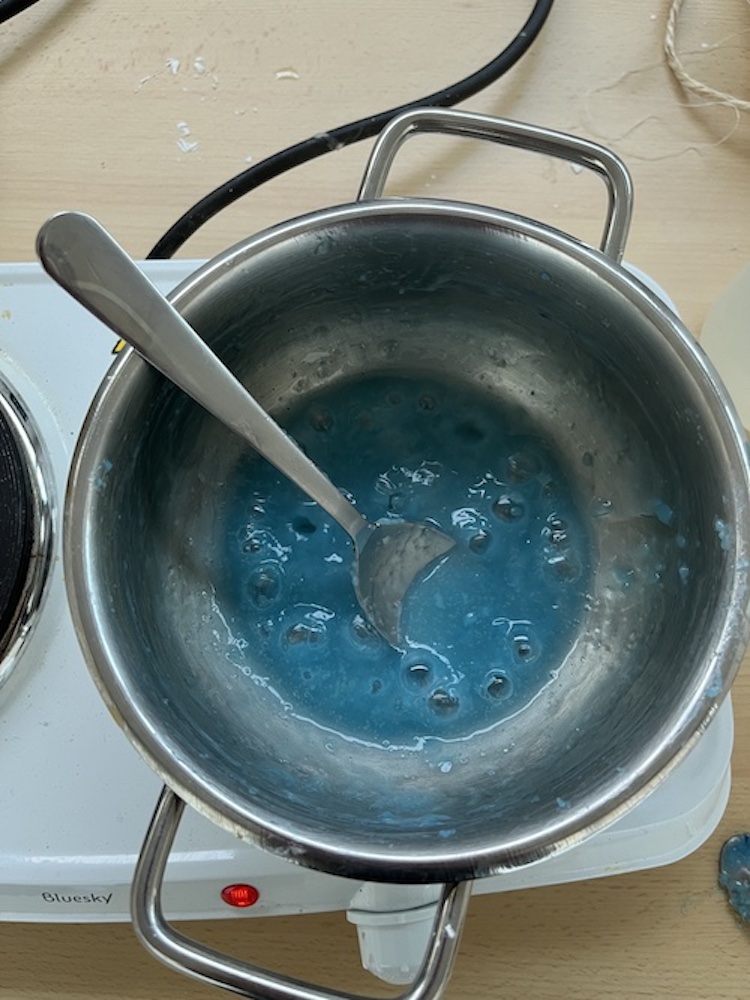 |
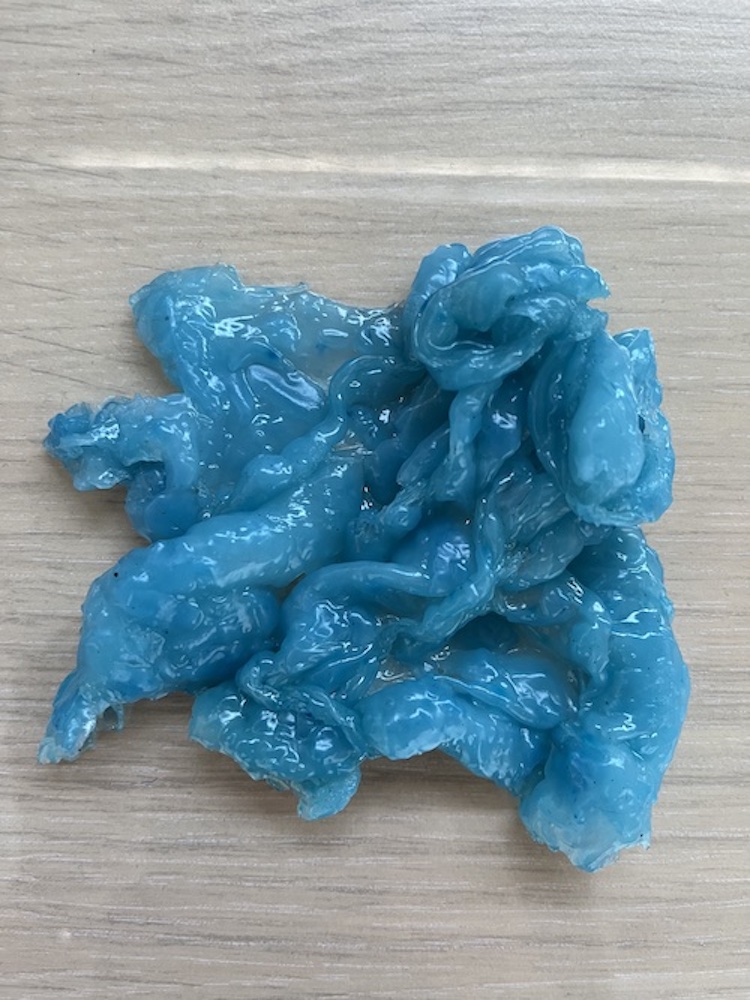 |
Cooking with tumeric pigment¶
We redid the same recepi, stirring better and managing the heat better. We added the tumeric pigment and pourred it into a recipient :
| Cornstarch | with tumeric pigment |
|---|---|
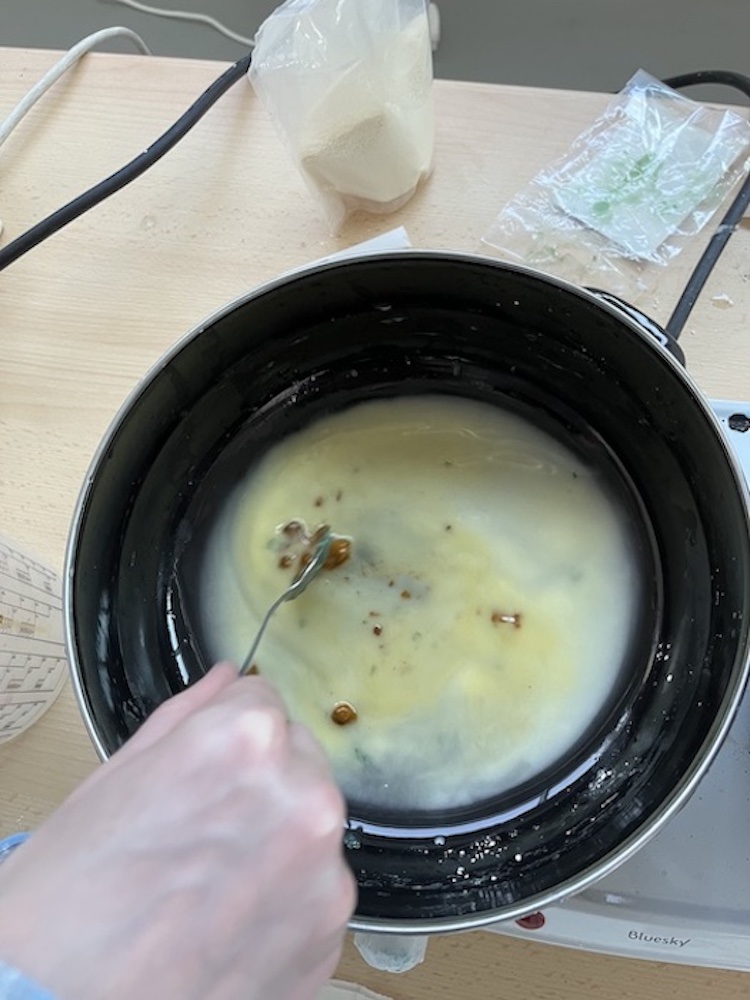 |
 |
Conductive Gelatin bioplastic Ge04¶
We followed the following recepi : Conductive Gelatin bioplastic Ge04
Composition¶
- Gelatin 26 Gram (g)
- Glycerol 10 Gram (g)
- Water 100 ML
- Activated charcoal 2G
Cooking¶
- We mixed the gelatin powder and the water. Stired until the mixture thickens like a glue.
- We heated the mixture on high heat. When the preparation become liquid again, added the glycerin.
- We Added the activated charcoal and stired.
- We pourred the preparation on a flat surface
- We flattened the material on the surface
- After 1 day it was dry we tested it conductivity as in the video :
| Gelatin | with Activated charcoal |
|---|---|
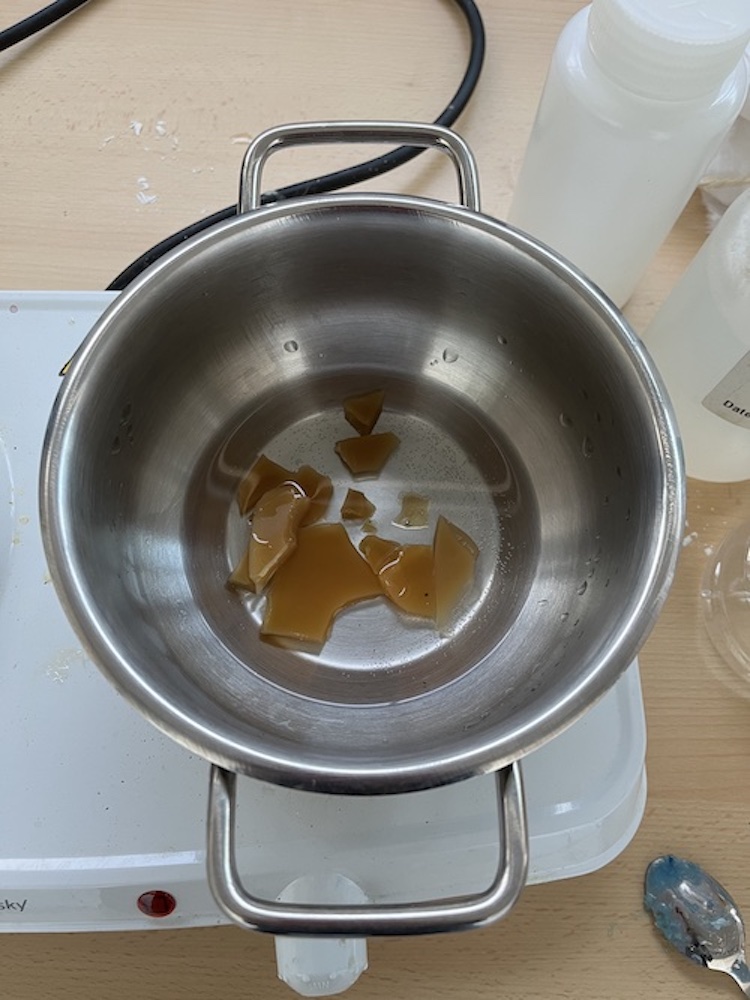 |
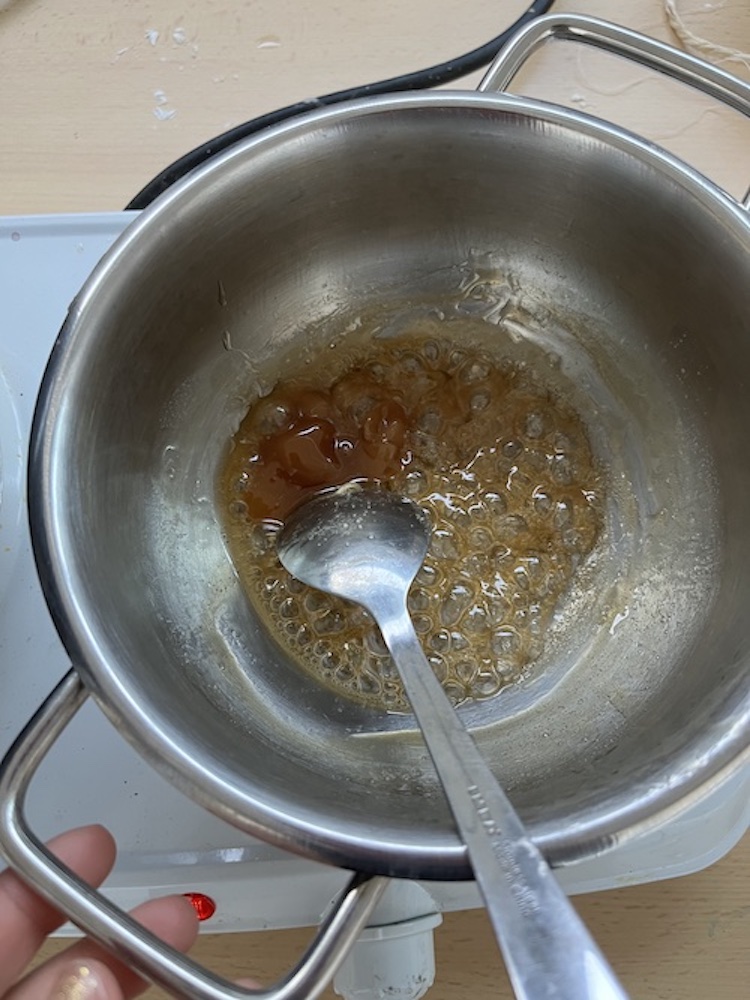 |
 |
Agar | Gelatin bioplastic AgGe01¶
We followed the following recepi : Agar | Gelatin bioplastic AgGe01
Composition¶
- Agar agar 1 Tablespoon
- Glycerol 1.5 Tablespoon
- Water 2 Cups
- Gelatin 20G
- 1 teaspoon of Oxyde of Iron Red
- Activated charcoal 1G
- Bleu of methylene 1 teaspoon
Cooking¶
- We added the gelatin, agar, and glycerol to a pot and stir until combined.
- We added the amount of water and boiled and stirred until the agar and gelatin dissolve completely.
- We added the iron
- Once the mixture is warm, we pourred half into the mold with only the iron
- we then added the activated charcoal, stirred and we pourred half into the mold
- We then added to the mix with the iron and the charcoal, bleu of methylene
| Agar Gelatin | with iron and activated charcoal |
|---|---|
 |
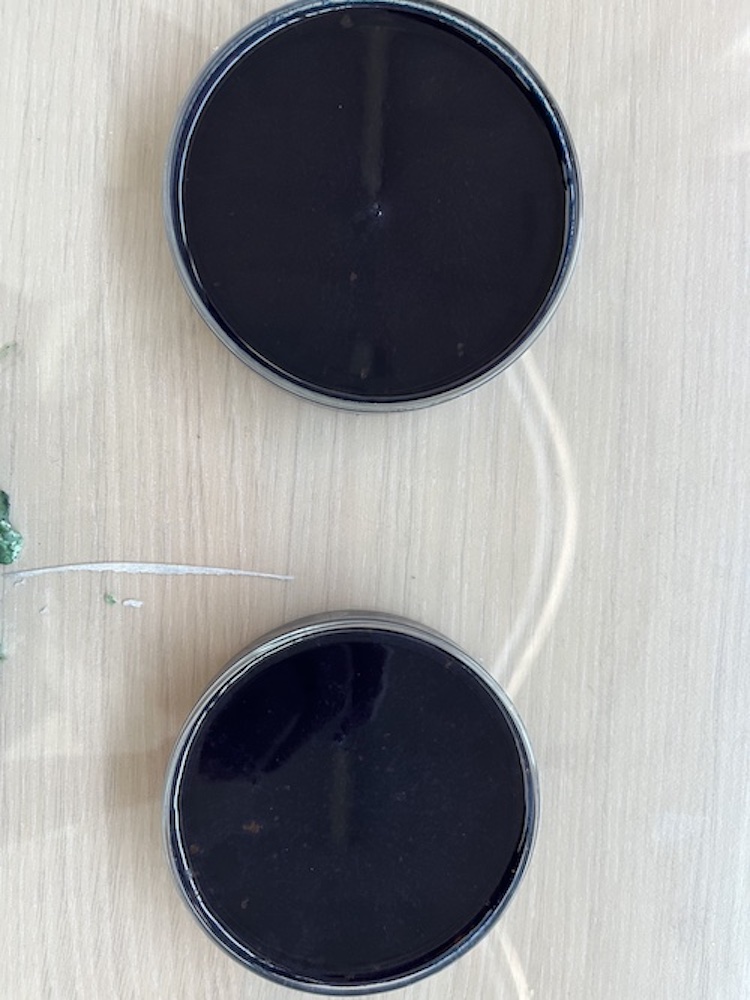 |
Xanthane biomaterial¶
We redid exatly the same recipe than the cornstach replacing it by Xanthane and added 1 teaspoon of Bleu of methylene to it :

Composition and naming of the experimentations :¶
The final composition of the ensemble of experimentations that we did is here :
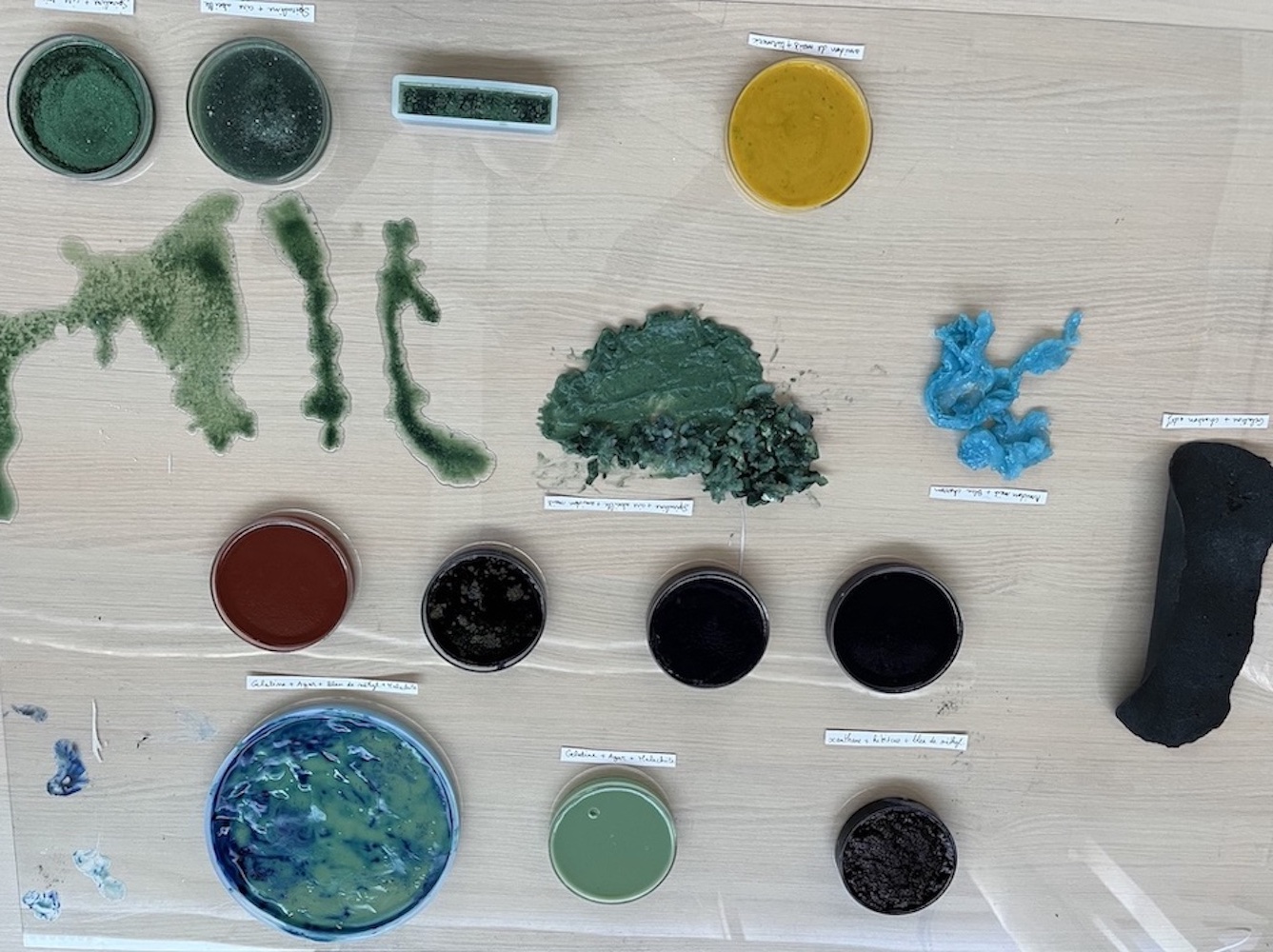
With labels :)
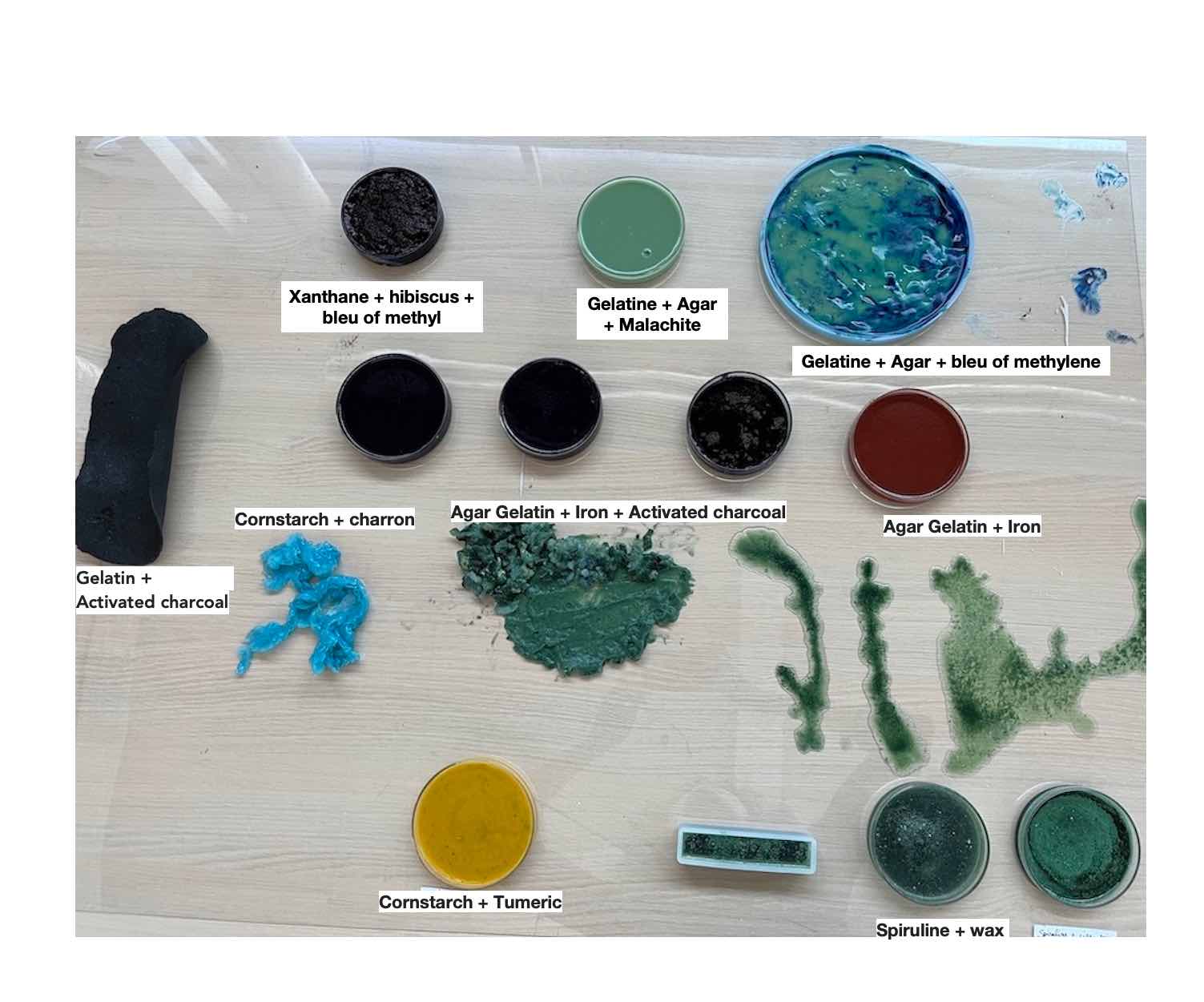
Last update: 2021-12-17